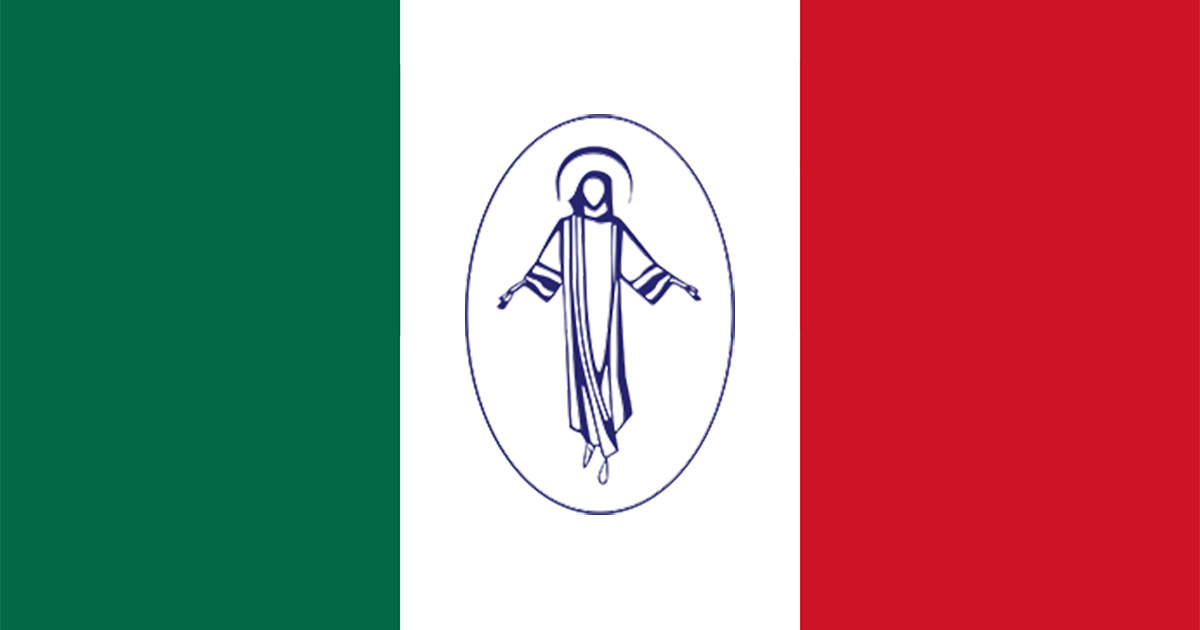On November 4, 1844, 11 Daughters of Charity from Spain landed in Veracruz, called by a group of mexicans, led by Dr. Manuel Andrade. With them, as directors, also arrived Frs. Buenaventura Armengol and Ramón Sanz, members of the Congregagtion of the Mission. The initial purpose was for the Daughters of Charity to attend charity centers and school education for a multitude of poor and orphan girls.
On January 4, 1845, the President of the Republic, José Joaquín Herrera, ratified the Daughters’ entry permit, with the right to receive and open foundations.
On March 8 they took over the San Juan de Dios hospital in Mexico City and in October~November of the following year they opened a public school in Silao, Gto.
Missionaries Armengol and Sanz, on their part, very soon discovered that the ministries of the Congregation of the Mission had a great field of action, beyond the direction of the Daughters of Charity.
The Bishops of Mexico City, Puebla, Michoacán, Guadalajara and Querétaro asked for missionaries for seminary formation and for missions in the villages.
Father Armengol, in a letter to Superior General Jean-Baptiste Etienne of December 1844, summed up his hope for the future of the Congregation in Mexico: “The harvest is immense.”
From 1845 reinforcements began to arrive from Spain, France, Italy… missionaries who would be the true founders of the Province. Vocations were also emerging: in 1846 the Internal Seminary opened to train candidates in the spirit of the Congregation. Seven years after the first missionaries arrived, in 1851, there were already 17 novices and 10 Mexican Brothers. In total, the Province had 42 members. And with this good group of workers, the mission begun.
The first ministry that was requested from the Congregation was the direction of Diocesan Seminars. In this way, the first foundations of the Province were those of the Clerical School of Belén, in Puebla (1846) and the one of the seminary – school of Our Lady of the Light in León, Gto. (1847). Then, many more would come. The Province served the Church of Mexico in this ministry for a whole century, until 1944.
Soon the missionary work also began, to which the Province has dedicated, until today, its best efforts. The first mission was preached in 1852 in Tetepango, Hgo., of the Archbishopric of Mexico; the second in Santa Ana Chiautempan, Tlax., of the Bishopric of Puebla, in 1852-53. At that time it was written of this mission that was “one of the most fervent and admirable that the Mexican soil has been able to contemplate.”
And this was only the beginning of a great missionary journey across the country, from north to south, through remote corners of its geography. A journey that has lasted, thank God, 175 years. It is still possible to find in small distant churches or in large urban parishes, crosses or plaques that bear witness to a Vincentian mission. In many places it is possible to find images of Saint Vincent or the Virgin of the Miraculous Medal, or small works of assistance, which are signs of the fruitful passage of the Missionaries, who were true heroes of the Gospel, men of great apostolic zeal and faithfulness to the spirit of the Congregation. By way of example, I transcript part of a testimony about Fr. Petul, a great missionary of the Yucatan Peninsula:
I discovered his dead body at 8 a.m. Sunday, January 13, 1958. On a poor and old hammock, in that gloomy and poor room lay the oldest in the Province, Fr. Petul. He had died healthy, it went out like a candle that has no more wick to burn or more wax on which to burn.
He have had a few years of peaceful innocence: a stroke had taken part of his lucidity. He was innocent as a child. He told his anecdotes as someone who tells something he has seen without belonging to him. He was smiling without ever saying, in the way of the conquerors, his missionary feats, witnessed by the silent jungle. His sermons were written in the Mayan language, a dark language for us but which, according to those who read it, had the elegant fury of a resurrected language.
I often think of the word “holy.” I never heard of Father Petul that he had transgressed the Constitutions of the Small Company. They spoke, on the contrary, with admiration and affection for their obedience, humility, docility. I never heard anything extraordinary about him, miracles or portents, but the simplicity of his life spent on coming and going in search of the hidden and malnourished souls of the Mayab jungle.
God bless so many missionaries who have built the Kingdom in these Mexican lands!
(Data taken from the book “Nuestros Orígenes y Peregrinar” [Our Origins and Pilgrimage], by Fr. Juan José Muñoz, C.M.)
Source: Evangelio y vida, September / October 2019 issue








0 Comments